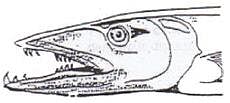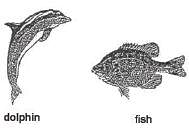Olympiad Test: Living Organisms And Their Surroundings -1 - Class 6 MCQ
20 Questions MCQ Test Science Olympiad Class 6 - Olympiad Test: Living Organisms And Their Surroundings -1
Which among these children made a correct statement?
Which of the following characteristics of a glass of water mean that it cannot be considered alive?
| 1 Crore+ students have signed up on EduRev. Have you? Download the App |
Some yeast, sugar and water are mixed in a test-tube. The diagrams show the testtube at the start and after one hour.

Q. Which process causes this change?

Excretion, irritability and reproduction are characteristics of:
Look at the following picture carefully. Which of the following characteristic of living organisms it is showing?

One of the characteristics of living organisms is that they all respire by:
The following picture is an example of plants. The picture is of ___________
 .
.
Which of the following organisms is not ultimately dependent on the sun as a source of energy?
What is the term which refers to all the chemical energy transformations that occur within a cell?
Soham set up two small aquariums at home. He placed three rainbow fish in each aquarium but he put hydrilla plants in aquarium A only. After some time he observed that that the fish swam freely in aquarium A but the fish in aquarium B swam near the water surface.

Q. He concluded that the hydrilla plants_____________.
Study the diagram as shown below.

Q. Which one of the following is an example of Y?
Study the diagram below:

Q. Which group of items can you put into box A and B ?
John set up two tanks. He placed three guppies in each tank but he put hydrilla plants in Tank A only. John found that the fish swam freely in Tank A but the fish in Tank B swam near the water surface.

Q. At night, both the guppies and the hydrilla plants take in and give out .
Some green beans were placed on some damp cotton wool in a dish and placed in a dark corner. A few days later, the beans started to grow into seedlings. The beans get their food for growth from the ________________.
Which of the following describes respiration?
Ananya: Animals take in carbon dioxide and give off oxygen.
Sanchit: Animals take in oxygen and give off carbon dioxide.
Saumya: Plants take in carbon dioxide and give off oxygen.
Ranchit: Plants take in oxygen and give off carbon dioxide.
Animals have structural and behavioural adaptations which enable them to survive in their natural habitats.

Q. By looking at the picture of the head of the fish, which of the following is true of how this organism survives in its natural habitat?
The following aquatic animals are grouped according to their breathing adaptations. Which group of animals does not breathe in the same way?
Which of the following animals have the correct form of adaptation?
Animals use different parts of their bodies to move around.
In the following table, the body parts used by the corresponding animals are matched. Which animal is matched incorrectly?

Based on the diagrams of the dolphin and the fish (not drawn to scale), which characteristic they share in common?

1. They both have whiskers.
2. Each has a tail to propel itself forward in the water.
3. Both have gills to breath.
4. Both are warm blooded.
|
49 videos|108 docs|108 tests
|
|
49 videos|108 docs|108 tests
|

















